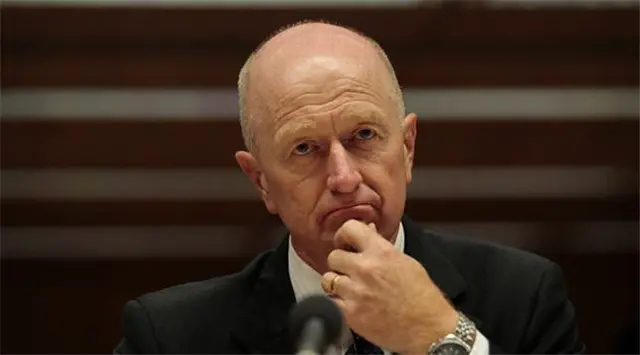ForthefirsttimeinyearsGlennStevensprobablywon’tbeaskingforaweakerAustraliandollarforChristmas.
WiththeFederalOpenMarketCommitteeraisinginterestrateslastweekforthefirsttimeinalmostadecade,theReserveBankofAustraliaGovernorisgettingthehelpheneedsinholdingdowntheAussie.Itwasat71.67U.S.centsasof5p.m.onMondayinSydney,havingdroppedforbothofthepasttwoweeks.Incontrasttoyearsgoneby,Stevensthismonthdeclinedtonominateapreferredlevelforthecurrencyinamediainterviewbeforetheholidaybreak.
TheboostfromaweakercurrencyisincreasinglyimportantforAustralia’seconomyasslidingcommoditypriceshurtcorporateandgovernmentrevenuesatatimewhentheRBAisseenbysomeanalystsasreluctanttoloweritsbenchmarkratefromarecordlow.Thecurrency’s31percentdepreciationoverthepastthreeyearshasalreadyhelpedtoboostsectorsfrommanufacturingtotourismandeducation,underpinningjobsgrowththathaspushedtheunemploymentratedownto5.8percentfromaJanuarypeakof6.4percent.
“IsuspectGovernorStevenswillbequietlypleasedtoseethefallintheAussieaftertheFOMC,givenhowmanytimeshemusthavebeenwarnedthatthehikewasfactoredintotheAussiealready,”saidSeanCallow,aforeign-exchangestrategistinSydneyatWestpacBankingCorp.“Itseemstheperiodofjawboningisbehindus.HeseemswillingtotrustthemarketstoresumesellingAussieifcommoditiesremainweak.”
The Australian dollar has dropped 35 percent since reaching a record high of $1.1081 in 2011. Having declined 12 percent since Dec. 31, it is poised for a third-straight year of weakness after defying analysts in the period following the 2008 global financial crisis.
That strength, which came on the heels of a record commodities boom for Australia, was sustained even as mining investment started declining and the economy slowed. The RBA started easing policy in November 2011 and has reduced its benchmark 2.75 percentage points to an unprecedented 2 percent since, with its most-recent cut coming in May this year.
Narrower Premium
Tighter U.S. policy has helped shrink the yield premium on Australian debt, making such holdings less attractive. Two-year Aussie notes offered 105 basis points more than similar-dated Treasuries, compared with an average of 257 over the past decade.
Back in December 2013, when the Aussie was trading near 90 cents, Stevens said that a level of about 85 U.S. cents “would be closer to the mark” than 95 cents. Toward the end of 2014, with the local dollar above 80 cents, he said about 75 cents would be better than 85.
One year on, the central bank chief declined in his annual interview with the Australian Financial Review published Dec. 16 to nominate any particular level, merely noting that the foreign-exchange rate was adjusting and further moves were possible on the back of commodity price declines. Later that day, the Federal Reserve increased its benchmark rate for the first time since 2006, pushing the Aussie to a one-month low.
Adding weight on the currency has been a 29 percent slide this quarter in the price of iron ore, Australia’s chief commodity export.
The Aussie will continue to be pressured lower by a strong U.S. currency and lower commodity prices, according to Commonwealth Bank of Australia, the nation’s largest lender. Deutsche Bank AG predicts that the currency will fall to 60 cents by end-2016 and trough at 58 the following year. The median of estimates compiled by Bloomberg is for it to fall to a low of 68 cents in the September quarter of 2016.
“Stevens has gone a little quiet on the Aussie, but I think he would be happy it is falling and would be hoping for further weakness,” said Joseph Capurso, a strategist at Commonwealth Bank of Australia in Sydney. “I can see Aussie falling to 67 to 69 cents in the first half of 2016.”
 简体中文
简体中文





